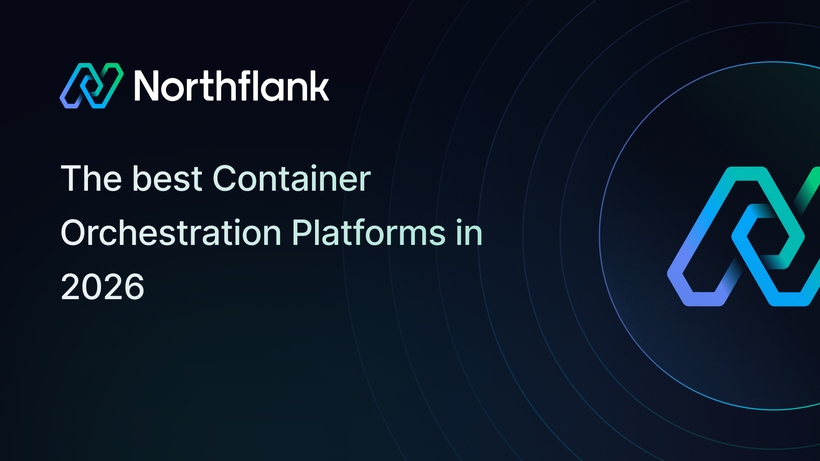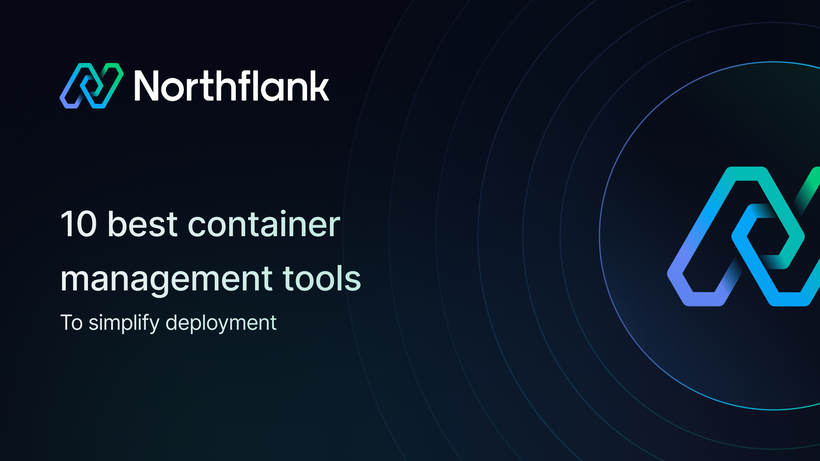

Best Qovery alternatives in 2025
Remember when deploying apps was the most frustrating part of your week? For many dev teams, it still is. That’s why Qovery made such a strong impression early on. It brought a much-needed layer of simplicity and automation to modern app deployments, helping countless teams ship faster without deep DevOps expertise.
But as projects scale and infrastructure needs grow more complex, the cracks can start to show. Teams often encounter limitations around customization, cost control, and scalability that can slow progress and increase operational overhead.
The good news is that the deployment landscape has evolved. Platforms like Northflank and others are pushing the boundaries with greater flexibility, deeper CI/CD features, and more scalable developer experiences.
Let’s cut through the marketing hype and explore the best Qovery alternatives that are helping real teams build, deploy, and scale smarter in 2025.
Qovery gained traction by making modern app deployments more accessible, but for many growing teams, it’s started to show its limits. As architectures evolve and developer expectations rise, certain recurring challenges are driving teams to look elsewhere. Here’s a more detailed breakdown of the most common friction points:
Qovery simplifies the deployment process with opinionated defaults, but that same simplicity can become a bottleneck. As applications grow more complex (microservices, background workers, jobs with custom schedules, etc.), teams often hit limitations in how workloads are defined, scheduled, or deployed. Custom routing, granular autoscaling rules, or non-standard workloads may require awkward workarounds or fall outside Qovery’s support altogether.
While Qovery handles basic deployment pipelines, it lacks the kind of deep CI/CD integration that more advanced teams rely on, like dynamic environment provisioning per branch, matrix builds, promotion workflows, or native GitOps support. This often forces teams to bolt on additional CI/CD tooling, creating fragmented workflows and longer debug loops.
Qovery’s black-box architecture can make it hard to plug into established DevOps stacks. Whether it’s secrets management, custom observability tooling, infrastructure as code (IaC), or policy-as-code systems, the lack of extensibility can slow teams down, or worse, force them to compromise on standards and security.
Qovery’s pricing is attractive for early-stage projects. However, as usage increases with more environments, services, and cloud consumption, costs can rise quickly. Maintaining cost transparency becomes increasingly difficult, especially when compared to platforms that offer finer-grained control over resource usage and built-in cost optimization tools.
Fast-moving teams need fast, clear answers—especially when things break. Qovery’s support model can lag behind the needs of larger or more regulated teams. Combined with limited visibility into underlying infrastructure, it can leave developers feeling stuck when trying to debug or trace performance issues.
If you're considering a switch, it's not just about “what’s missing”—it’s about what your team actually needs to build faster and scale smarter. Here are the most important factors to weigh when evaluating alternative platforms:
Does the platform allow you to deploy across AWS, GCP, Azure, or even self-hosted environments? Even if you might not need it today, multi-cloud readiness ensures future flexibility and avoids lock-in.
From local dev parity to intuitive UIs and painless environment management, the best platforms prioritize a great DX. Think: clear logs, fast deploy feedback loops, CLI/GUI/API consistency, and minimal context switching.
As your team and workloads grow, you’ll want a platform that scales horizontally and vertically. Bonus points for built-in autoscaling, job scheduling, and support for both stateless and stateful workloads—without you having to configure Kubernetes by hand.
Look for platforms that support Git-based workflows, secrets managers, monitoring and alerting tools (e.g. Datadog, Prometheus), container registries, and infra tools like Terraform or Pulumi. Native integrations reduce glue code and help your team move faster.
Cost shouldn’t be a mystery. Top platforms offer usage-based pricing with clear tiers, visibility into spend per environment or service, and optimization tools that help you stay within budget as you grow.
Does the platform support encryption at rest and in transit? Role-based access control (RBAC)? Audit logging? SOC 2, GDPR, HIPAA, or ISO 27001 compliance? These features aren’t just for enterprises—they matter to every team managing sensitive data or regulated workloads.
You need confidence that your platform can deliver. Check for documented SLAs, robust rollback and redeploy options, self-healing infrastructure, and mature incident response processes. Bonus if the platform surfaces key metrics directly in the dashboard.
Northflank is a platform that enables developers to build, deploy, and scale applications, services, databases, and jobs on any cloud through a self-service approach. For DevOps and platform teams, Northflank provides a powerful abstraction layer over Kubernetes, enabling templated, standardized production releases with intelligent defaults while maintaining necessary configurability.

Key features:
- Kubernetes-powered, full-stack platform
- Deploy containers, databases, and scheduled jobs
- Bring your own cloud (AWS, GCP, Azure, etc.)
- CI/CD integration, real-time logs, with a developer-friendly and consistent experience across UI, CLI, API, and GitOps
- GPU support for AI workloads
- Automatic preview environments and seamless promotion to dev, staging, and production
Why choose Northflank over Qovery?
- More advanced automation and CI/CD features.
- Greater flexibility in cloud provider selection.
- Enterprise-grade security and monitoring tools.
- Lower costs with transparent pricing models.
Potential drawbacks:
- Highly experienced DevOps teams might find it restrictive compared to directly managing raw Kubernetes clusters. It’s a fine balance between ease of use, flexibility, and customization; that line differs for every organization.
See how Weights company uses Northflank to scale to millions of users without a DevOps team
Flightcontrol enables Heroku-like deployments on AWS, allowing developers to leverage cloud infrastructure without deep DevOps knowledge.

Key features:
- Deploy directly to AWS without managing Kubernetes
- Automated scaling and infrastructure provisioning
- Built-in CI/CD integration
Potential drawbacks:
- Limited to AWS, no support for GCP or Azure
- Lacks Kubernetes-level customization for advanced use cases
Porter provides a Kubernetes-based platform that aims to simplify container management and deployment.

Key features:
- Kubernetes-native approach with simplified UI
- Good template system for common deployments
Potential considerations:
- Steeper learning curve for teams without Kubernetes experience
- Less robust CI/CD capabilities compared to Northflank
- Limited enterprise support options
For a closer look at how Porter compares to other tools, this article offers a well-rounded analysis.
Cloud66 is a DevOps automation platform that provides production-ready Kubernetes deployments with multi-cloud and on-premise support.

Key features:
- Infrastructure as code for Kubernetes clusters
- Multi-cloud compatibility (AWS, GCP, Azure, on-prem)
- Advanced security and compliance features
Potential drawbacks:
- Requires more hands-on infrastructure management
- More complex setup compared to fully managed platforms
Portainer simplifies container and Kubernetes management, offering a GUI-based approach for managing deployments across on-prem, hybrid, and cloud environments.

Key features:
- GUI-based Kubernetes management
- Multi-cloud and on-prem deployment support
- Role-based access control for secure operations
Potential drawbacks:
- More focused on Kubernetes management rather than full deployment automation
- Lacks built-in CI/CD and GitOps features
For a closer look at how Portainer compares to other tools, this article offers a well-rounded analysis.
Selecting the optimal Qovery alternative involves a systematic approach:
- Identify your primary challenges: Pinpoint the specific limitations you're experiencing with Qovery.
- Prioritize requirements: Create a weighted list of features and capabilities most crucial to your workflows.
- Consider team expertise: Evaluate your team's familiarity with the underlying technologies of each platform.
- Conduct targeted proof of concept: Test your most critical workloads on shortlisted platforms.
- Evaluate total cost of ownership: Look beyond base pricing to include potential savings in developer time and infrastructure optimization.
- Plan for growth: Select a platform that can accommodate your projected scaling needs.
Based on these criteria, Northflank consistently emerges as the superior choice in 2025, particularly for teams seeking an optimal balance of power, flexibility, and usability. Its comprehensive feature set addresses common Qovery limitations while providing additional capabilities that enhance productivity and control.
While Qovery continues to serve many organizations effectively, the evolving demands of modern development teams often necessitate alternatives with enhanced capabilities. Among the leading contenders, Northflank stands out as the premier option, offering superior deployment flexibility, advanced CI/CD features, and exceptional developer experience without compromising on performance or scalability.
For organizations looking to optimize their cloud deployment strategy, Northflank represents not merely an alternative to Qovery, but a significant advancement that can transform application delivery and management. As the PaaS landscape continues to evolve, platforms that successfully combine powerful features with intuitive interfaces—as Northflank does—will continue to lead the market by enabling teams to focus on building great products rather than managing infrastructure.
Ready to make the switch? Try Northflank today and take your deployments to the next level!



